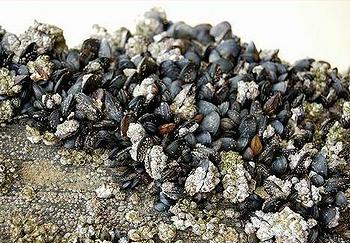Cowell's Beach along with dozens of others statewide got a well deserved cleanup from the Save Our Shores organization along with the California Coastal Commission Cleanup Day and the Ocean Conservancy International Cleanup Day events.
But for thousands of local volunteers from the Save Our Shores organization, the day started with picking up cigarette butts, plastic cups, food wrappers and other mysterious items that would surely need the assistance of a pair of gloves.
This year marked the 28th anniversary that Save Our Shores has participated in the beach clean up day at Cowell's Beach along with the California Coastal Commission Clean Up Day event and the Ocean Conservancy’s International Coastal Clean Up.
And according to Save Our Shores program coordinator Rachel Kippen, the three of them combined makes up the largest volunteer event on earth.
Some 3,500 volunteers collected 16,827 pounds of debris on Santa Cruz and Monterey County beaches, according to organizers. In Santa Cruz County, 2,354 volunteers cleaned 76 miles of beach, river, lake, creek and slough of 9,947 pounds of debris.
“We like participating in it because it is our biggest volunteer event of the year and we do over 250 beach cleanups every year,” she said. “This is a really great way to rope more people in in our community and also people that are just visiting for the weekend.”
Kippen has been with the group for a little over two months and likes what she has seen so far from the people that want to help keep the beaches clean and safe to be on.
“We really appreciate having the local community come out and volunteer cleaning up our local beaches, our local waters ways, lakes, streams because all of that runs down to the Pacific,” said Kippen.
“We’re really encouraging folks to try to reduce their single use plastic consumption,” she said. “Plastic pollution is a huge problem and we find it on these beaches, it’s in the cigarette butts that we picked up which were hundreds of those today.”
A group of students from Independence High School in San Jose also made the trip and first time volunteer Jannat Thanh admitted that guilt took a part on why she helped out at Saturday’s event.
“I saw pictures of animals like a turtle that was wrapped up in the six-pack rings and it grew into it,” she said. “It was kind of deformed and I felt bad for the animals.”
Her friend from the group, Emily Gallardo, also came to help out for the first time and was interested in participating in the Save Our Shores event from an announcement in school.
“I first heard about it in my marine biology class and then we started doing more research on how the plastic and all the debris affected the animal’s lives,” said Gallardo. “You just start to pity the animals and you want to help them out after that.”
Another reason Gallardo and Thanh also helped out was because of an interesting theory they learned in class called the Great Pacific Garbage Patch, a landfill of trash that roams out on top of the surface and down bellow the floors of the cold sea.
According to the Save Our Shores website, the top ten items that are collected during the beach cleanups from 2007–August 2011 are plastic cups (12,572), plastic bottle caps (17,967), glass pieces (28,083), plastic bags (28,454), fireworks (32,629), paper pieces (36,866), Styrofoam pieces (46,693), plastic food wrappers (66,381), plastic pieces (86,246), and in numero uno are the disgusting cigarette butts (228,776).
And although Kippen is all about keeping local shops open and having tourist come hang out in the area, her effort to clean up the beaches also goes back to saving the environment for the oceanic wildlife.
“People come to Santa Cruz and Monterey and want to enjoy this beautiful sanctuary and if our beaches are trashed it deters tourist, it hurts our economy, and hurts our local business,” said Kippen. “Then on an eco system level, the animals in the ocean didn’t evolve in an ocean that had our plastic pollution in it and that harms them in so many different ways.”
“This is kind of the last effort that we can get the garbage before it gets into the ocean,” said Kippen “The beach clean up is the last line of defense but we really want to stop it before it gets here.”



















